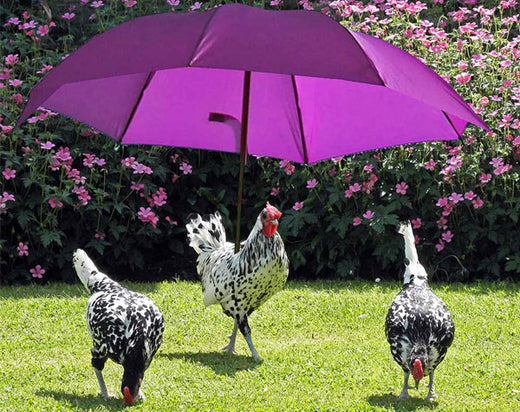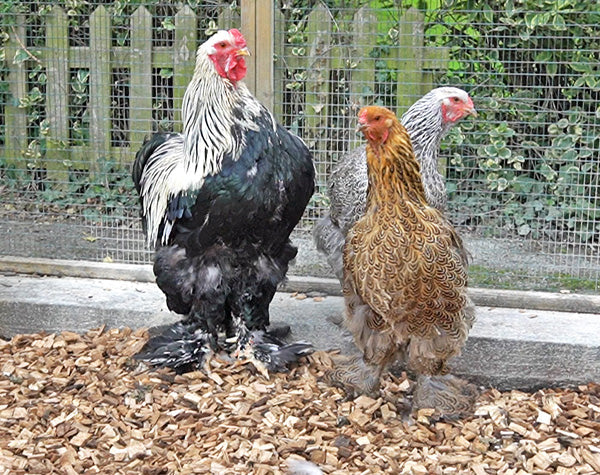Which Nest Box to Choose and How to Site It
Why Garden Bird Nest Boxes Are So Important
For the last decade or two, as you probably know, natural nesting spaces for wild birds in the UK have been disappearing at an alarming rate. Old trees have been felled, farm buildings renovated as houses, fewer hedgerows, the use of pesticides, and despite protections, the countryside is also shrinking.
Our wild birds struggle to find safe places to raise their brood; they need our help! Although to most of us, a declining countryside and woodland habitat is out of our control, adding a bird nesting box, or two, or more, in your garden is one of the simplest and most effective ways to help wildlife survive.

A recent government report (The Wild Bird Indicator for the UK. September 2025) has collected data from BTO, RSPB, et al. It shows that native farmland birds (e.g. Lapwing, Skylark, Reed Bunting, Yellowhammer) have had a loss of 61% since 1970, and woodland birds (Pied Flycatcher, Wood Warbler, Woodpecker, Jay), by 35%. All of the above are on the Red or Amber conservation list.
Seabirds and waterfowl have also been particularly affected by bird flu, of course, which continues to ravage their population. Some species of our small garden birds have also declined due to disease and loss of habitat e.g. House Sparrows have shown a 60% loss since 1979.
However, it's not all bad news ... there are increasing numbers of Nuthatches, Goldfinches, Blue Tits, Blackcaps, and, after a decline, Greenfinches are recovering too. Garden Bird populations, especially Tits and Robins, have benefited hugely from nesting boxes and garden feeders.
A well-placed bird box - whether for blue tits or owls - will offer a safe home for breeding birds in spring. And, it will provide vital shelter in autumn and winter too, when cold weather and predators pose a real threat to small creatures. If you have mature trees in your garden, you can probably attract quite a few species.
Which Garden Birds Use Nest Boxes?

Not every species will move into a nest box - and that’s completely normal.
Some birds, like chaffinches, goldfinches, and long-tailed tits, prefer to weave their nests among branches and foliage.
Others, known as cavity-nesting birds, e.g. Treecreeper, naturally seek out holes and crevices to raise their young.
The species most likely to make use of your nest box, include:
- Blue Tits and Great Tits
- House Sparrows
- Nuthatches and Flycatchers
- Robins, Wrens and Blackbirds
- Starlings and Woodpeckers (with larger boxes)
With fewer natural cavities available, a garden bird box can be a lifesaver and might stop birds from nesting in risky places like guttering or vents.
Visit our Garden Bird Information page for a list and photos of the most common birds we can find in our gardens, including their breeding habits and their conservation status.
Bird Nest Box Hole Sizes: Choose the Right One
The entrance hole size is a small detail that makes a big difference. It affects which species will use the box and keeps predators (like a Magpie, Cat, or Sparrowhawk) from reaching inside.
| Hole Size | Ideal For |
|---|---|
| 25–28 mm | Blue, Coal, and Marsh Tits |
| 30–35 mm | House Sparrows, Great Tits, Flycatchers, Robins, Nuthatches |
| 50–70 mm | Starlings, Woodpeckers, Doves, Little Owls |
| Open front | Robins, Redstarts, Pied Wagtails, Blackbirds, Wrens |
Why You Should Install a Nest Box Before Spring
While spring is the peak nesting season, birds often explore and claim nesting sites months in advance. Installing your box in autumn or winter gives them time to familiarise themselves with it - and many species will also use it as a roosting shelter during colder nights.
A year-round nest box means you’re supporting birds through every stage of their lifecycle, from surviving winter to raising chicks in spring.
How to Choose the Perfect Nest Box Location

Where you place your nest box is just as important as the box itself. Birds look for safe, sheltered, and easy-to-reach spots.
Follow these expert tips:
🪶 Mount the box 2–3 metres above ground (or up to 5 m for larger species).
🌤️ Face the entrance north or east to avoid strong winds and harsh sun.
🌳 Keep it out of direct sunlight and away from heavy rain.
🐱 Position it away from fences or areas cats can climb.
✈️ Ensure birds have a clear flight path to the entrance.
If you’re putting up multiple boxes, space them 3–10 metres apart to avoid territorial disputes. Robins, for example, prefer more distance, while sparrows are happy nesting close together - even in a shared 'terrace' style box.
Nest Box Maintenance: Keep It Safe and Inviting
A nice, clean bird box is far more likely to be reused each year. Once the breeding season is over (usually by October or November), open the box and carefully remove old nesting material. Cleaning this out now will help to prevent mites, fleas, and wasps from settling in.
💡 Extra maintenance tips:
- Don’t add nesting materials, thinking you will encourage the birds to nest - birds prefer to collect their own.
- Mount the box at least 1.5 to 2 metres high or more to keep it out of reach of predators.
- If the nesting box has not been used after two breeding seasons, try moving it to a new location.
- A quick rinse with hot water or a mild, eco-friendly disinfectant will keep the box safe for the next residents.
A Small Box, a Big Impact
Putting up a wooden nesting box for garden birds might seem like a small step when bird populations are declining, but it can have a huge impact. You’re giving birds a safe place to rest their weary heads, nest in comfort and safety, and raise their babies, while bringing nature closer to your home.
Plan what you can do in your garden, and you could have a thriving bird-friendly habitat supporting wildlife for years to come.
©Flyte so Fancy Ltd 2025. Author: Anne Weymouth (Director, Flyte so Fancy Ltd). Reproduction of part or all of this text is only possible with the express permission of Flyte so Fancy Ltd.




